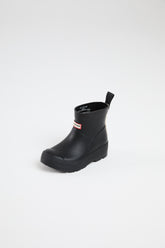Create A Container Garden 🌻
Whether you have a large garden, a small patio or simply a balcony, capsule container gardening offers you flexible growing opportunities. Growing plants in containers is an easy way to create an instant display right outside your back door that can be changed as and when you like. It’s especially ideal if you’re short on space.
Garden containers pots and planters are a great way of introducing greenery into any space. They are also perfect for smaller gardens or spaces like window ledges. The good thing is planters are not just for flowers; they are also ideal for growing fruits and vegetables, and even shrubs and trees. Herbs, in particular make good container plants, as well as being useful in the kitchen.
Although capsule container grown plants need a little extra TLC; so here are our top 4 tips for container gardening.
1. Pick the right container
Match the planter to the size of the plant, so the plant has enough space to grow. Plants tend to outgrow their pots, so keep on eye on your leafy friends and re-pot them in a larger planter if required. If you are growing a climber plant or a taller plant that needs support, then try attaching a trellis or some garden mesh.
 Containers come in many shapes, sizes and colours. You can opt for a more conventional terracotta or wooden pot or use a quirky container by recycling an old watering can, teapot or even wellies – the sky is the limit when it comes to creativity. If choosing a wooden planter, look out for treated planters that are more resistant to rot and decay.
Containers come in many shapes, sizes and colours. You can opt for a more conventional terracotta or wooden pot or use a quirky container by recycling an old watering can, teapot or even wellies – the sky is the limit when it comes to creativity. If choosing a wooden planter, look out for treated planters that are more resistant to rot and decay.

If you are looking for something more decorative try a hanging baskets to add colour and charm to any space. Keep an eye out for our up coming How To Create A Hanging Basket Guide.
Ensure your planter or pot has adequate drainage too, essential for preventing rotten roots and water-logged plants. Most will come with drainage holes but don’t be afraid to drill a few extra ones into the bottom.
2. Creating your container
When filling your container choose the right compost for your plants. A multi-purpose compost which is nutrient rich, lightweight and retains water will keep most plants happy. While some acid-loving plants such as azaleas, hydrangeas, gardenia, and berries including raspberries and blueberries need ericaceous compost which is more acidic and suited to lime-hating plants. If growing perennials you’ll need to scrape off the top layer and replace it with fresh compost annually.

You can add large stones, grit or even polystyrene to the bottom of your planters to help with drainage as well as reducing the amount of compost needed for larger and deeper pots. To keep pests at bay try to elevate your planters by placing a brick under the pot. Some pots even come with feet to keep them off the ground.
Don’t be afraid to add solar lights or garden ornaments to your pots (where room allows without restricting or harming your plants) to add a little personality to your capsule garden.
If you need an gloves, garden tools or cultivators you'll find everything you need in our garden and DIY collection.
3. Watering and Caring for Your Containers
Plants growing in containers don’t have access to as much moisture as those growing in the ground, rain won’t always reach the roots. Be prepared to water them more often; particularly important on hot sunny days when compost can dry out. In the summer water plants thoroughly in the morning or evening, making sure the water soaks through to the roots.
Nutrients in most composts will be at their best for a couple of months, so be sure to add plant food to keep your plants healthy and flowers flourishing. Plants should be fed around every fortnight during the growing season. Keep an eye out for yellowing leaves, often a sign that your plants need feeding.

Be sure to prune your plants when required to promote healthy growth. Prune plants using garden sheers to remove damaged or diseased branches and buds, spent flowers and leaves. Remember pruning also improves air flow and results in healthier, more vigorous plants.
4. Location, Location, Location
Choosing the right spot in and around your home for your plants will help them to thrive. Plants that require a lot of sun need around 6 hours of sunlight a day, and therefore should be placed in a south or west-facing location.

Shade-loving plants should be grown in pots placed in the shade to stop the cold and winds from harming them. Placing containers near walls, fences and hedges are all good options. If placing pots on a wall or balcony, ensure they are fixed securely.

For more garden inspiration take a look at our How To Upcycle Old Garden Pots guide to take your old pots from drab to delightful.











